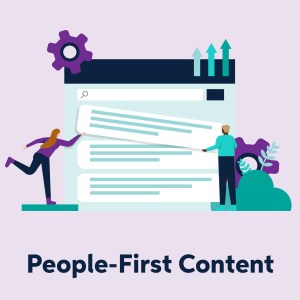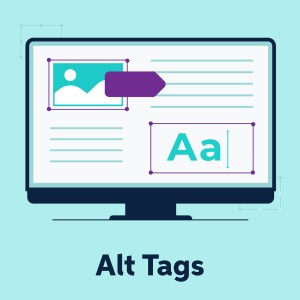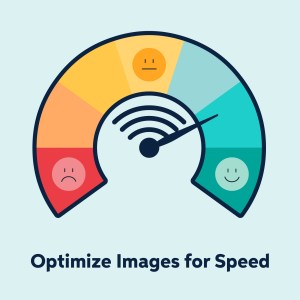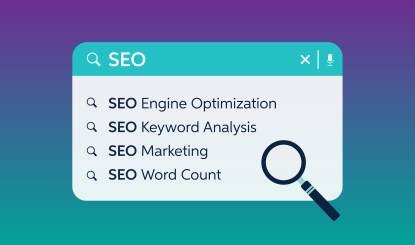How to Maximize Search Ranking Potential for Every New or Updated Piece of Content
SEO Best Practices for Site Content
Every time you add or update content and images to your website, you have an opportunity to improve your site’s search ranking and increase relevant traffic that is likely to convert.
How to begin? The process is called search engine optimization (SEO). While SEO has multiple facets, and it can be complex, the content optimization component is fairly straightforward, and can be done by anyone with editing rights on your website.
These guidelines and resource links will provide an easy-to-follow roadmap for making the most of every piece of new content, or content updates on your site.
Start with the Big Three
The big three first steps in content creation are:
- Marketing and communication objectives.
- Helpful, reliable, people-first content (per Google guidelines).
- Target keywords or search phrases.
Marketing and Communication Objectives
Are you investing your content creation time in a way that aligns with key marketing objectives? Check this one off before proceeding.
People-First Content

You want to rank for your most beneficial and/or profitable terms, but the path to that goal means winning the hearts and minds of your readers and potential customers.
For example, one of our client companies, which operates in the home garden space, has become one of the nation’s leading authorities on bulbs, perennials, and other landscaping topics, with top search rankings on hundreds of gardening subjects. That translates not only into sales and abundant traffic, and a stream of new users, but also, to brand loyalty!
Target Keywords & Search Phrases (The Toolkit)
Every new or updated piece of content should be developed with a keyword or search phrase in mind. This will influence your choice of headlines, sub-headlines, body copy, and image or video choices.
Keywords align with marketing and business objectives, but how to choose? That’s where some useful tools come in. Google Trends will show you search volume and trends for your selected search phrases.
Your site’s own Google Search Console will show you actual search terms users have input to reach your site.
Services such as SEMRush and Moz can provide a wealth of keyword information. If you use Google Ads, that service comes with a powerful suite of keyword research tools.
On-Page SEO
When you have completed your Big Three research, you are ready to write, and implement on-page SEO to make the most of your efforts.
Page URL: The keyword or search phrase you have researched belongs in the page URL, if possible. These can be customized with common site platforms, such as WordPress.
Content headline and sub-headline: It should be relatively easy to incorporate your keyword / search phrase into the main content headline. It shouldn’t appear obvious to the reader that you are pushing a keyword, but it needs to be there! Same for the lead sub-headline (H1) tag.
Body copy: Your keyword or search phrase belong in your body copy, but not too many times. Copy should read naturally, and it should never be obvious that the keyword is being pushed (keyword stuffing).

Don’t believe those who say keyword tactics are no longer valid. The search engines still look for keywords and search phrases when creating page rankings.
A tool such as Yoast SEO, when installed, will conveniently tell you when you are using your keyword with too little, or too much frequency.
Images and Alt Tags (and Video): Ideally, a website page will have at least one, or better, several relevant images, or when relevant and useful, charts, graphs, videos, etc. These add usefulness, and credibility and authority to your page. An image’s Alt tag is intended to help with accessibility for the visually impaired, but it should also double as a descriptive to include your search phrase.
Title and Meta Description Tags
Title tags are the clickable headlines you see in search engine results pages. Every content page should include a unique and relevant title tag, including your target search phrase. A tool such as Yoast, has a field for the title tag, including real-time guidance on correct character length.
Meta description tags describe your page content in a little more depth than the title tag, and they should also include the target search phrase.
Google and other search engines may overwrite your choice with their own interpretation of what these tags should be, but it’s always best practice to include them.
Optimize Images for Speed: The speed at which a page loads has become ever more important in site ranking. Google measures load times in hundredths of a second. It’s key to reduce image sizes to their very minimum file size (while maintaining quality) to speed load time. Consult with your designers and website developers to minimize file size and use other technical solutions to improve speed.

Word Count Guidance: Google representatives have stated that word count is not a search ranking factor. However, longer-form content tends to rank higher. Why? Because it does the best of job of creating meaning, and usefulness to the reader, and helps the search engines categorize and assess the substance, value, and uniqueness of the content.
Commit to providing unique value for the reader, and as little as 500 words, or thousands of words, can do the job. Shorter content enhanced with a useful, interactive tool can work well, also.
Use the tools: Yoast SEO is the most popular site SEO plugin, for the most-used site platform, WordPress, so put it to use. The basic version is free. Yoast will help guide you through all the on-page optimization steps described here, including readability. It will warn you if you are over- or under-utilizing your keywords.
Other SEO Dimensions: Beyond the on-page SEO tactics described here, are technical SEO factors that can be optimized in the background, and crucial backlink enhancement strategies, but those are topics for another blog!
Get An Optimization Expert
Do you want more optimization tips and tactics, or are you looking for an SEO expert to work on your website? Reach out to Hammer Marketing and let us help your with your digital marketing.

